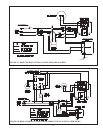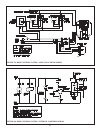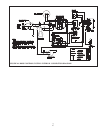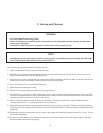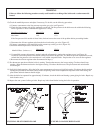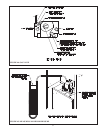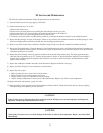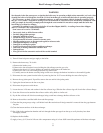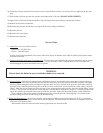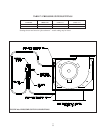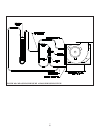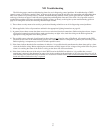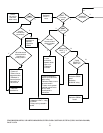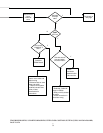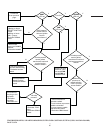
53
53
Heat Exchanger Cleaning Procedure
1) Turn off electrical power and gas supply to the boiler.
2) Remove the burner tray. To do this:
a) Remove the intake cover.
b) Remove the four Allen head screws holding the elbow fl ange onto the gas valve.
c) Remove the three 10-32 screws holding the manifold gasket plate to the intake box.
d) Remove the four 5-16 nuts holding the burner tray in the boiler.
e) Carefully remove the burner assembly being careful not to damage the fi redoor insulation or the manifold gasket.
3) Disconnect the vent system from the boiler by removing the four 10-32 screws holding the vent collar in place.
4) Remove the top jacket panel. If possible, remove the rear and left side jacket panels.
5) Unplug the fan and remove the fan cover plate.
6) Disconnect the pressure switch hoses.
7) Loosen the two ¼-20 nuts and washers in the fl ue collector lugs. Slide the fl ue collector lugs off of each fl ue collector fl ange.
8) Score the silicone seal around the fl ue collector with a utility knife or similar tool.
9) Pry the fl ue collector off of the heat exchanger, being careful not to damage the fl ue collector or fan.
10 Remove the stainless steel fl ue baffl e from each fl ue passage.
11) Clean the fl ue passageways using a stiff bristle brush. Be certain that all foreign material is removed from the gaps between
the pins.
12) Clean the bottom surfaces of the heat exchanger.
13) Put a light in the combustion chamber and look through the fl ue passages from the top to verify that they have been
thoroughly cleaned.
14) Replace the fl ue baffl es.
15) Apply a heavy (1/4”) bead of silicone with a temperature rating of at least 400F around the perimeter of the heat exchanger.
WARNING
Soot deposits in the fl ue passages are a sign that the boiler may be operating at high carbon monoxide (co) levels. After
cleaning the boiler of soot deposits, check the CO level in the fl ue gas to insure that the boiler is operating properly.
If it is necessary to check CO, use a combustion analyzer, or other instrument which is designed to measure CO in
fl ue gas. A CO “sniffer” designed for testing CO levels in ambient air cannot be used to check boiler combustion. Take
a fl ue gas sample by inserting a sample probe through the vent terminal. Do not take a sample until the boiler has
been fi ring for at least fi ve minutes.
A normal CO reading for an CWD series boiler is less than 50ppm (0.005%). A reading of more than 100ppm
(0.01%) is indicative of a combustion problem.
Some causes of excessive CO include:
• Incorrectly sized or drilled burner orifi ce
• Partially plugged fl ue passages
• Improper manifold pressure
• Partial blockage of vent or intake system
• Foreign material in burner venturis or burner ports
• Missing regulator cover or disconnected regulator reference tube
• Damaged fan impeller or housing
• Damaged or missing fan gasket
• Leak in seal between fl ue collector and heat exchanger
• Distorted or missing combustion chamber fl oor
• Damaged base
• Flue gas leak in the concentric section of the coaxial terminal



